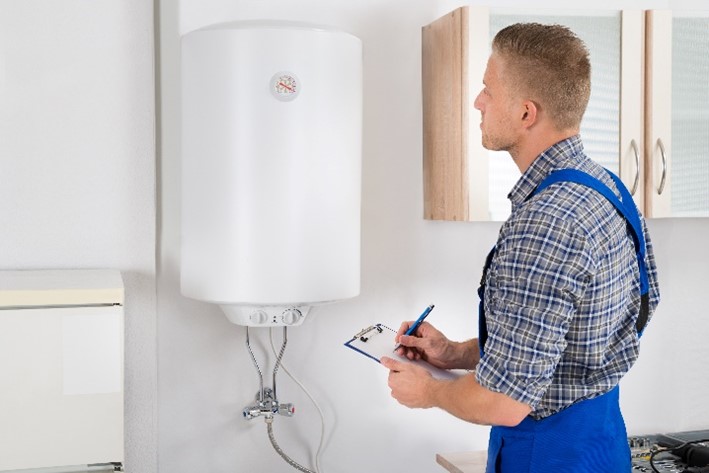Ways to Extend the Lifespan of Your Home's Hot Water System By Maintenance
Ways to Extend the Lifespan of Your Home's Hot Water System By Maintenance
Blog Article
Just how do you really feel about Tips For Maintaining Your Hot Water Heater?
:max_bytes(150000):strip_icc()/how-to-drain-a-water-heater-2719055-hero-35f0548b0f1f42f0b13ba96a33ab8da2.jpg)
Hot water is essential for daily convenience, whether it's for a refreshing shower or cleaning dishes. To guarantee your warm water system runs effectively and lasts much longer, routine upkeep is key. This short article supplies functional tips and understandings on how to maintain your home's warm water system to avoid interruptions and costly repair work.
Intro
Maintaining your home's warm water system might seem overwhelming, but with a few straightforward actions, you can ensure it runs efficiently for years to find. This overview covers everything from comprehending your warm water system to do it yourself maintenance ideas and recognizing when to hire expert aid.
Importance of Preserving Your Warm Water System
Regular maintenance not only expands the lifespan of your hot water system however additionally ensures it operates effectively. Disregarding maintenance can result in decreased effectiveness, higher energy expenses, and even premature failure of the system.
Indications Your Hot Water System Requirements Maintenance
Understanding when your hot water system needs attention can avoid major issues. Look out for signs such as inconsistent water temperature, strange sounds from the heating system, or corroded water.
Recognizing Your Warm Water System
Before diving into maintenance jobs, it's practical to comprehend the fundamental elements of your warm water system. Commonly, this consists of the hot water heater itself, pipes, anode rods, and temperature controls.
Month-to-month Upkeep Tasks
Routine monthly checks can help capture small problems before they escalate.
Flushing the Water Heater
Flushing your hot water heater gets rid of debris accumulation, improving performance and lengthening its life.
Monitoring and Changing Anode Rods
Anode poles protect against deterioration inside the container. Evaluating and changing them when worn is vital.
Checking and Changing Temperature Setups
Changing the temperature setups makes sure ideal performance and safety and security.
DIY Tips for Maintenance
You can execute a number of maintenance jobs yourself to keep your warm water system in top problem.
Looking for Leaks
Frequently evaluate pipelines and connections for leakages, as these can result in water damages and greater bills.
Examining Pressure Alleviation Valves
Checking the stress relief valve guarantees it works correctly and stops excessive stress buildup.
Shielding Pipes
Shielding hot water pipelines minimizes heat loss and can conserve energy.
When to Call an Expert
While DIY upkeep is beneficial, some problems require expert proficiency.
Complicated Concerns Needing Specialist Assistance
Instances include significant leaks, electrical troubles, or if your water heater is continually underperforming.
Routine Specialist Maintenance Perks
Expert upkeep can include complete examinations, tune-ups, and ensuring conformity with security criteria.
Conclusion
Routine upkeep of your home's hot water system is necessary for efficiency, longevity, and expense financial savings. By following these suggestions and recognizing when to seek expert assistance, you can make certain a dependable supply of warm water without unexpected disturbances.
Water Heater Maintenance Tips
Test the TPR Valve
Shut off the power and the cold-water supply valve. Place a bucket under the pipe connected to the temperature-pressure-release (TPR) valve on the top or side of the tank. (This valve opens if the tank pressure gets too high.) Lift the valve’s tab to let some water out, then let go. If water keeps flowing, drain the tank partway, unscrew the old valve with a pipe wrench, and install a new one. Check the Anode Rod
Put a hose to the tank’s drain cock and let out a few gallons of water. Now fit a 1 1/16-inch socket onto the rod’s hex head on top of the heater (or under its top plate) and unscrew the rod. If it’s less than ½ inch thick or coated with calcium, buy a new one, wrap its threads with Teflon tape, put it back in the tank, and tighten securely. Use this segmented rod if headroom above the tank is limited. Drain the Tank and Wash Out Sediment
Drain the remaining water in the tank into the bucket, then stir up the sediment on the tank’s bottom by briefly opening the cold-water supply valve. Drain and repeat until clean water comes out of the hose. Close the drain cock, refill the tank, and turn its power back on. Adjust the Temperature
Find the temperature dial on the side of the tank and unscrew its cover. Adjust the dial to 120 degrees using a flathead screwdriver. For every 10 degrees the temperature is lowered, you can expect to save up to 5 percent in energy costs. Turn the water heater off or the thermostat down to its lowest setting if you plan to be away from home for more than three days. Insulate the Pipes
Buy some self-sticking 3/8-inch-thick foam pipe insulation that matches the pipes’ diameter. Slide the foam over the hot-and cold-water pipes as far as you can reach. Insulating the cold-water pipe prevents condensation in summer. Peel the tape and squeeze the insulation closed. If the pipe is 6 inches or less from the flue, cover it with 1-inch-thick unfaced fiberglass pipe wrap. https://www.thisoldhouse.com/plumbing/21016402/how-to-maintain-a-water-heater

I'm very curious about Tips on Maintaining a Water Heater and I'm hoping you enjoyed my blog entry. Appreciated our blog entry? Please quickly share it. Help someone else locate it. We value your readership.
Click Here Report this page